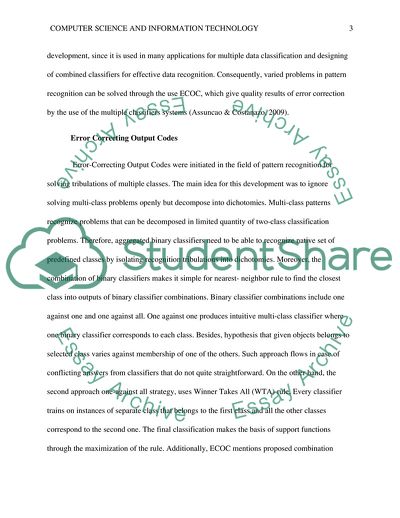Cite this document
(Error-Correcting Output Codes Coursework Example | Topics and Well Written Essays - 2250 words, n.d.)
Error-Correcting Output Codes Coursework Example | Topics and Well Written Essays - 2250 words. https://studentshare.org/information-technology/1828001-usage-of-error-correcting-output-codes-after-year-2000-what-is-ecoc-what-are-the-latest-approaches
Error-Correcting Output Codes Coursework Example | Topics and Well Written Essays - 2250 words. https://studentshare.org/information-technology/1828001-usage-of-error-correcting-output-codes-after-year-2000-what-is-ecoc-what-are-the-latest-approaches
(Error-Correcting Output Codes Coursework Example | Topics and Well Written Essays - 2250 Words)
Error-Correcting Output Codes Coursework Example | Topics and Well Written Essays - 2250 Words. https://studentshare.org/information-technology/1828001-usage-of-error-correcting-output-codes-after-year-2000-what-is-ecoc-what-are-the-latest-approaches.
Error-Correcting Output Codes Coursework Example | Topics and Well Written Essays - 2250 Words. https://studentshare.org/information-technology/1828001-usage-of-error-correcting-output-codes-after-year-2000-what-is-ecoc-what-are-the-latest-approaches.
“Error-Correcting Output Codes Coursework Example | Topics and Well Written Essays - 2250 Words”. https://studentshare.org/information-technology/1828001-usage-of-error-correcting-output-codes-after-year-2000-what-is-ecoc-what-are-the-latest-approaches.


